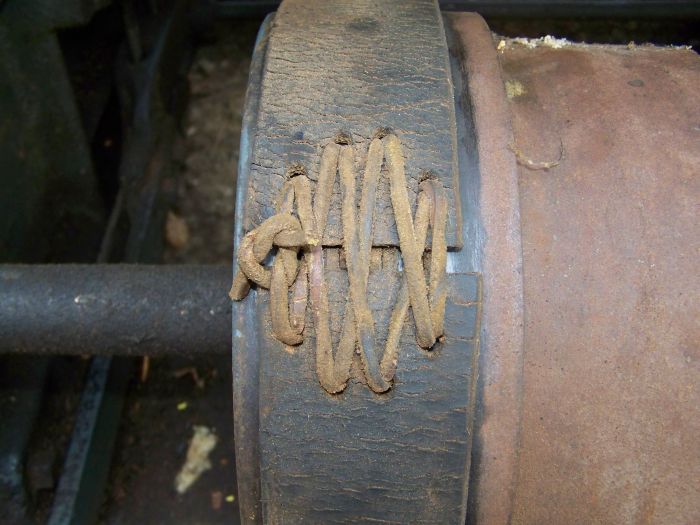Question
What are you guys using to de-bark? I usually pressure wash the logs, but in the winter, I would rather not. It is already wet enough around here. Wondering if the ground will ever freeze. I really need some timbers for a frame I need to get started on. I have the de-barker that goes on a chainsaw, but I have never used it. How long do those work, or stay sharp?
Forum Responses
(Sawing and Drying Forum)
From contributor T:
That's called the Log Wizard. We've been using it for about 7 months. It's not the be-all end-all answer to debarking. Use it mainly on red oaks. We extended the knives to their max exposure and it's still not aggressive enough. We are also having trouble keeping the chain tight. First used it on a bar that had one of those in-bar chain adjusters and used both. Then switched it to a saw that had an in-body chain adjuster. Then switched it to a heavier saw. The chain is still loosening too quickly.
Our only consolation is that we usually have extra hands and hatchets around the mill. We only use the Log Wizard when more than ~1/4 of the log needs cleaning. Try to find a place away from the mill to do your pressure washing.
I have used it on two saws. First on a Husqvarna 353 (an in between of the 350 and the 455 rancher - I think something like 3 hp). It's a small saw and it did a great job. The saw's clutch went (it was old, not because of the debarker) and I got it fixed, but in the mean time I hooked the Log Wizard up to a second saw - a 394 - for giggles! The dam thing flies with 8 hp! It actually works best, as said before, with the knives fully exposed, and not on full throttle. On full throttle, the blades move so fast that they skip over the wood and don't even have enough of a chance to cut. On about half throttle with a 394, the LW has enough hp to not slow down one bit and take the perfect cut.
Another big note: On both saws I have ruined about five bar sprockets. I have found the best way to run the Log Wizard debarkers is to cut off the sprocket, and use a Sawsall (a metal cutting blade is close enough of a kerf to work perfectly) to round off the inside of the rail so that the chain runs smoothly.
The original bar sprocket is not needed to run the debarker. The way that the sprocket is left exposed as it skips over to the debarker's sprocket, makes it so easy to drag chips into the bar's sprocket, and make it seize up. This is a hazard, and the Log Wizard company should really either make a bar designed for this, or let you know that you are going to have to modify a bar, more than just drilling two holes.
Also, if you are going to use the debarker to debark a finished product, either grind off the teeth on the chain so that they won't cut around the tip area, or order a cutterless chain from Baileys. If you do cut off a sprocket to fit the debarker, use the size chain made for that bar, not a chain 2" oversized like Log Wizard recommends for leaving the sprocket on.
